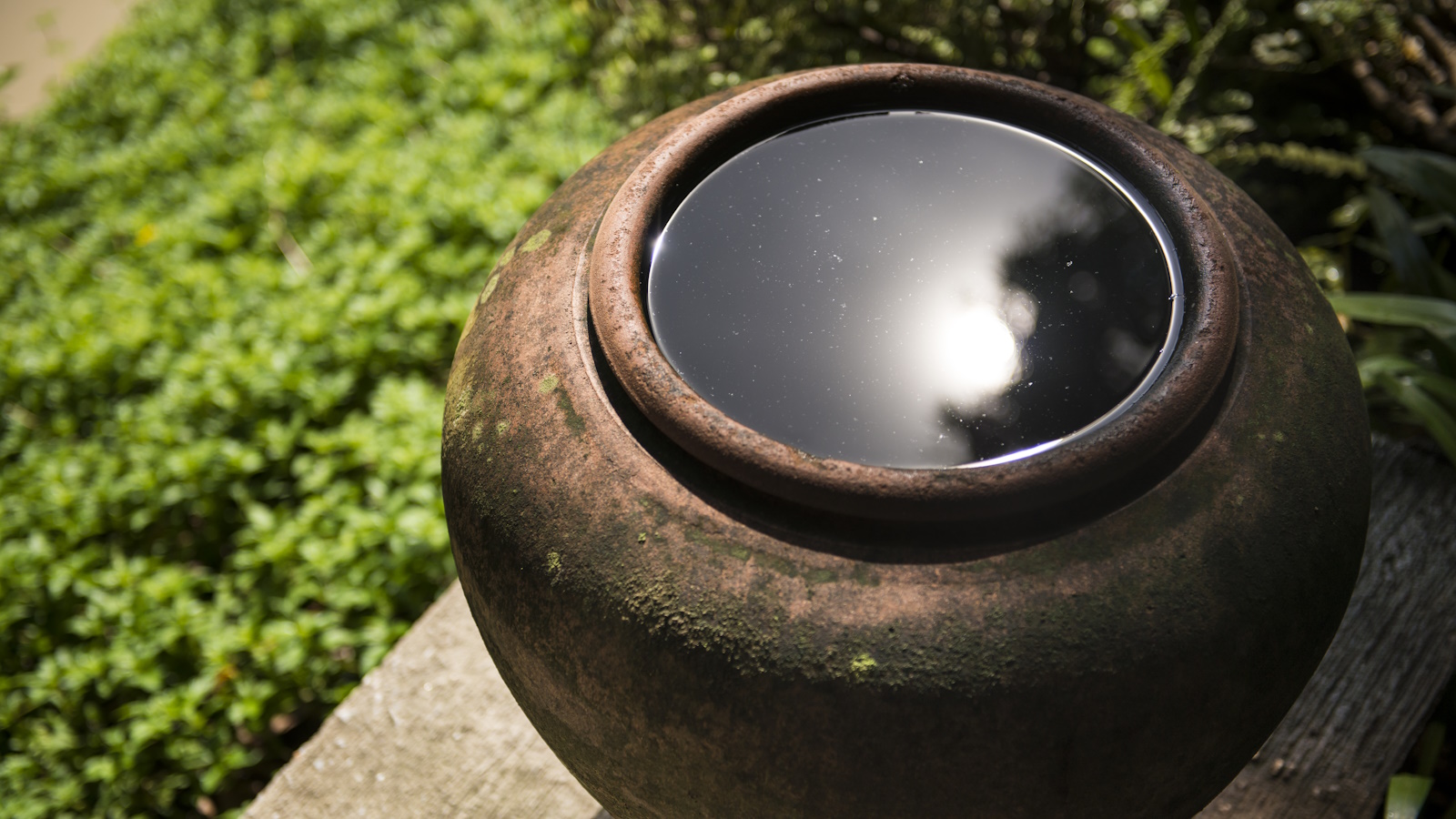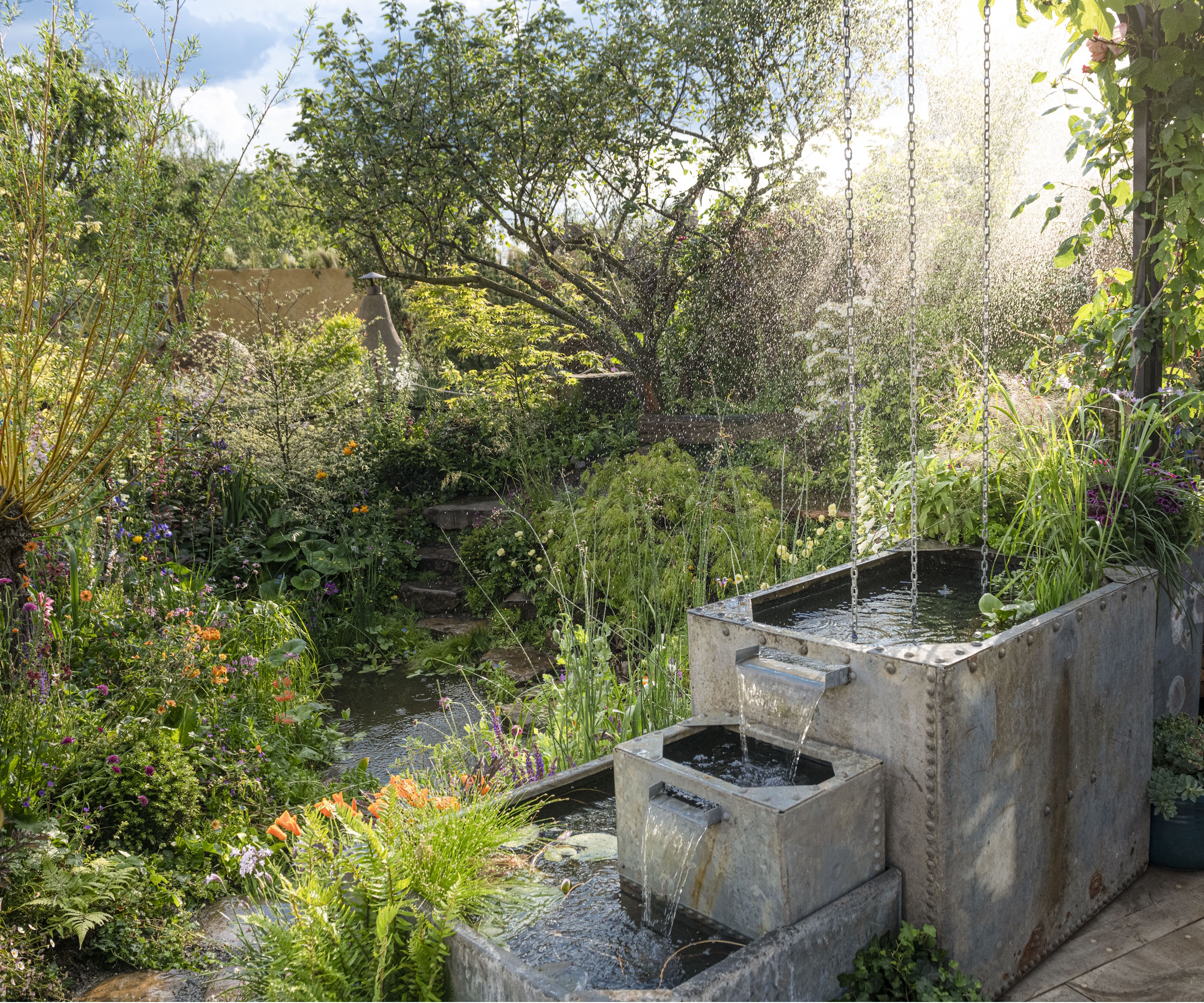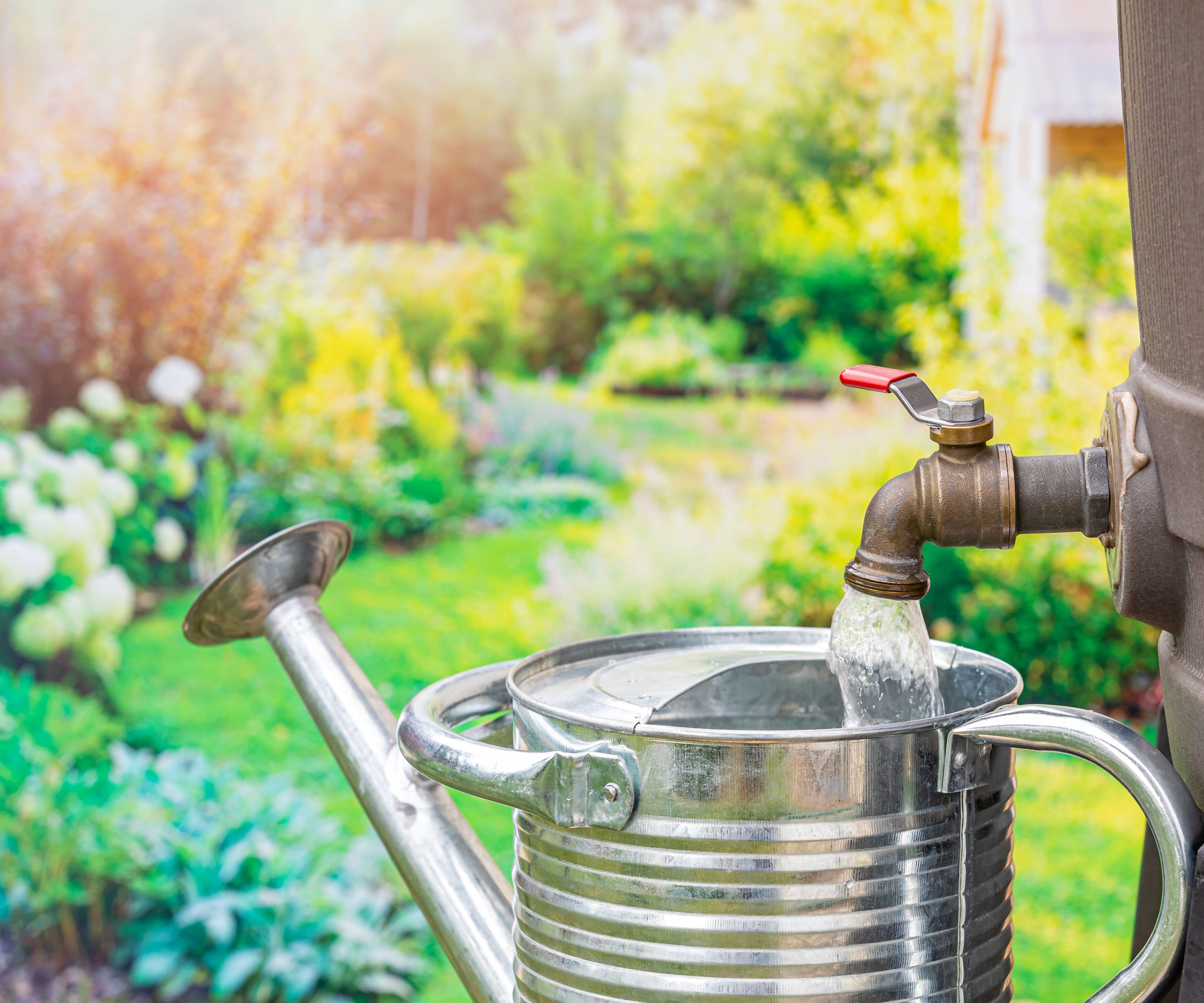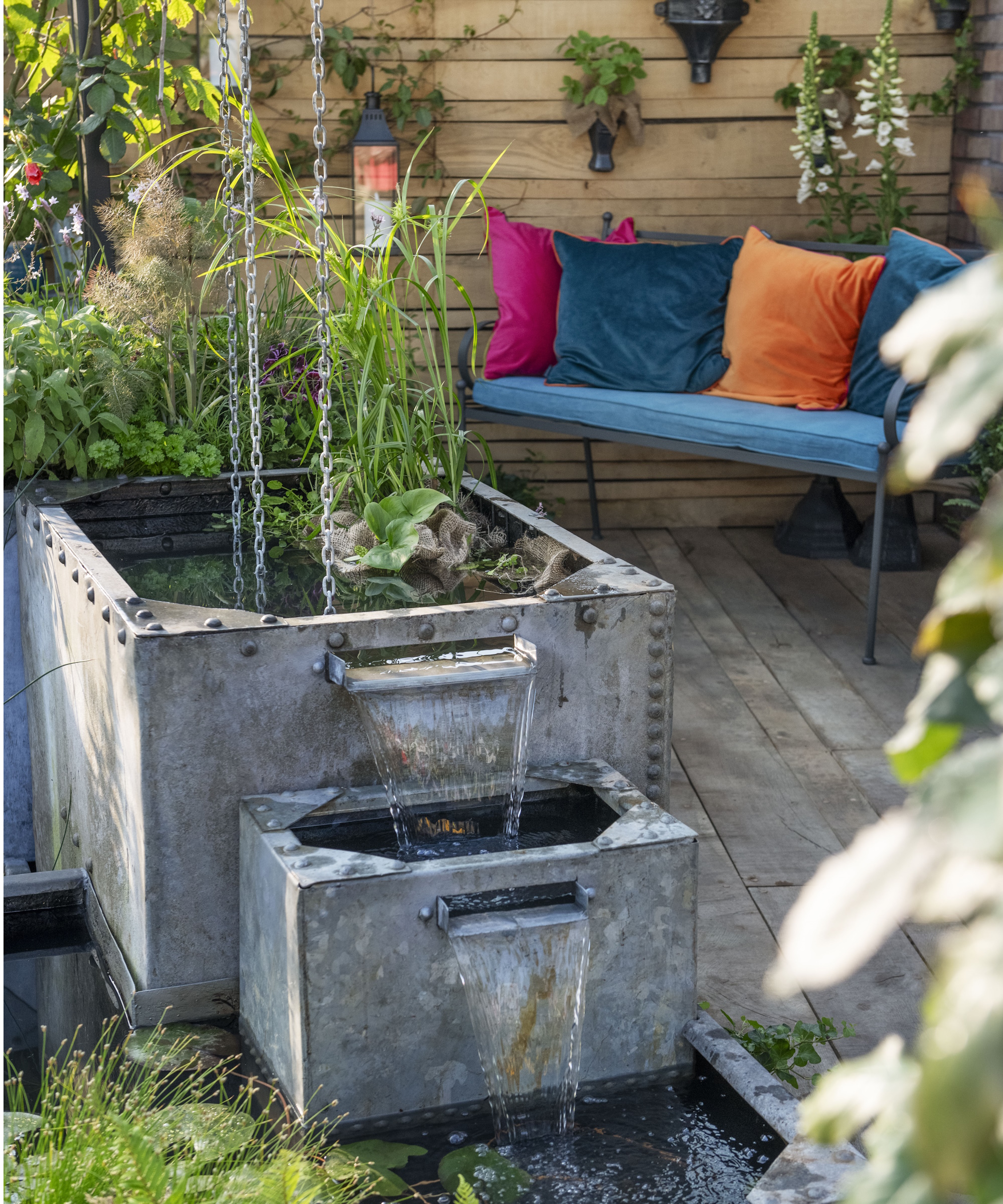
If you're seeking to find more sustainable ways of gardening, especially when it comes to watering, investing in a reliable vessel to collect rainwater in your yard is a must.
There are many different ways to do this, but the most common way people choose to harvest rainwater is to install a water butt. This is a tank or barrel, often cylindrical in shape, that collects water via a downpipe that would otherwise overflow from gutters or run into a drain.
However, water butts are not always the most aesthetically pleasing yard accessory. We spoke to experts to learn about a stylish alternative - a rain pot - looking into how they work and what commonalities they share with the trusty (yet often clumsy-looking) water butt.
What is a rain pot?

When it comes to harvesting rainwater and reducing water waste in your yard, a rain pot is not too dissimilar from a water butt, but there are some notable differences.
A rain pot typically features an open top to catch rain and a faucet on the side to dispense the water as needed, like this Amphora terracotta water harvesting pot from Home Depot. They are more decorative than rain barrels and water butts, often made from ceramic pot, terracotta, stone, zinc or hammered copper.
The material and shape of these pots will vary to meet your desired aesthetic. But generally speaking, a rain pot will be smaller in size and more decorative than a large water butt. They can also double as a planter, and be filled with flowers and shrubs that thrive in water-logged soil.
Sally McCabe, Associate Director of Community Education at the Pennsylvania Horticultural Society (PHS), explains: 'Because gardeners in different regions use different terms for many of the same things, let's clarify what we're calling a water butt, what makes something a rain pot, and what rain barrels, water tanks, and self-watering pots are,' says Sally.
'All are ways to store water; what varies is size, purpose, how the water gets in, how long the water stays in, and how the water gets out.'
What are the pros of using a rain pot?

There are several pros to using a rain pot. Firstly, when your rain pot is getting too full, you can easily prevent it from overflowing by letting some water out of the faucet to use elsewhere in your garden, whether that is directly onto a flower bed, or into a watering can.
They are also much easier and less messy to extract water from when filling up watering cans, meaning less spillage and wastage of your harvested rainwater.
Rain pots also tend to look better in your garden. The Impressions Corsican rain saver from Walmart, for instance, is very stylish without the bulkiness of a standard water barrel. Being typically smaller in size than a multi-gallon water tank, your rain pot can blend in with your planting better, and becomes a conscious part of your landscaping rather than a bit of an eyesore.
This 50 gallon granite-effect rain pot has two faucets at different heights making for easy filling of your watering can, and combines a planter section for moisture-loving plants.
This galvanized steel watering can would look lovely placed next to a decorative rain pot.
This classic style combines beauty and function. It has a brass faucet and a removable lid, which is great if you have small children.
Are rain pots a good alternative to traditional water butts?

Whether a rain pot is better than a water butt or rain barrel depends on what you need for your yard. As Sally mentioned, all water harvesting solutions serve a different purpose, so if you're building an aesthetic gardenscape and would love the addition of a decorative rainwater vessel it would likely be best for you.
However, if you have small children and animals, they could be at risk if you have an open ran pot in your yard. Therefore, sticking to a traditional water butt, or making sure you choose a pot with a lid, might be best for you.
FAQs
What maintenance does a rain pot require?
Sally McCabe, Associate Director of Community Education at the Pennsylvania Horticultural Society (PHS), says: 'Rain pots need to be drained regularly, cleaned periodically, and upended at least yearly. They should also be treated with BTi (bacillus thuringiensis israelensis) to keep mosquitoes from becoming a problem. This is a naturally occurring bacteria that helps control mosquito larvae.'
How can I maintain a rain pot in winter?
Depending on the material your rain pot is made from, it could be wise to empty your rain pot and move it in the winter to protect from freezing and cracking.
Jenny Rose Carey, a professional horticulturist, author and gardener, says: 'I have old whiskey barrels that are used as water butts and rain barrels. I have had them for many years and only have them connected in the summer months when my family are watering our outdoor plants. We have very cold winters, so if we left the water in the barrel it would freeze solid and probably break and leak next year.'
'Rain water is good for plants because it doesn't have the added chemicals that are sometimes found in tap water,' notes Jenny Rose Carey. 'Rain pots are a great way for a gardener to save use the free rain water that is coming from their roof to keep moisture-loving plants healthy.'
To add to your decorative rain pot, you could also switch a traditional downpipe for a rain chain to create a gentle, mesmerizing sound and a meditative feature.







